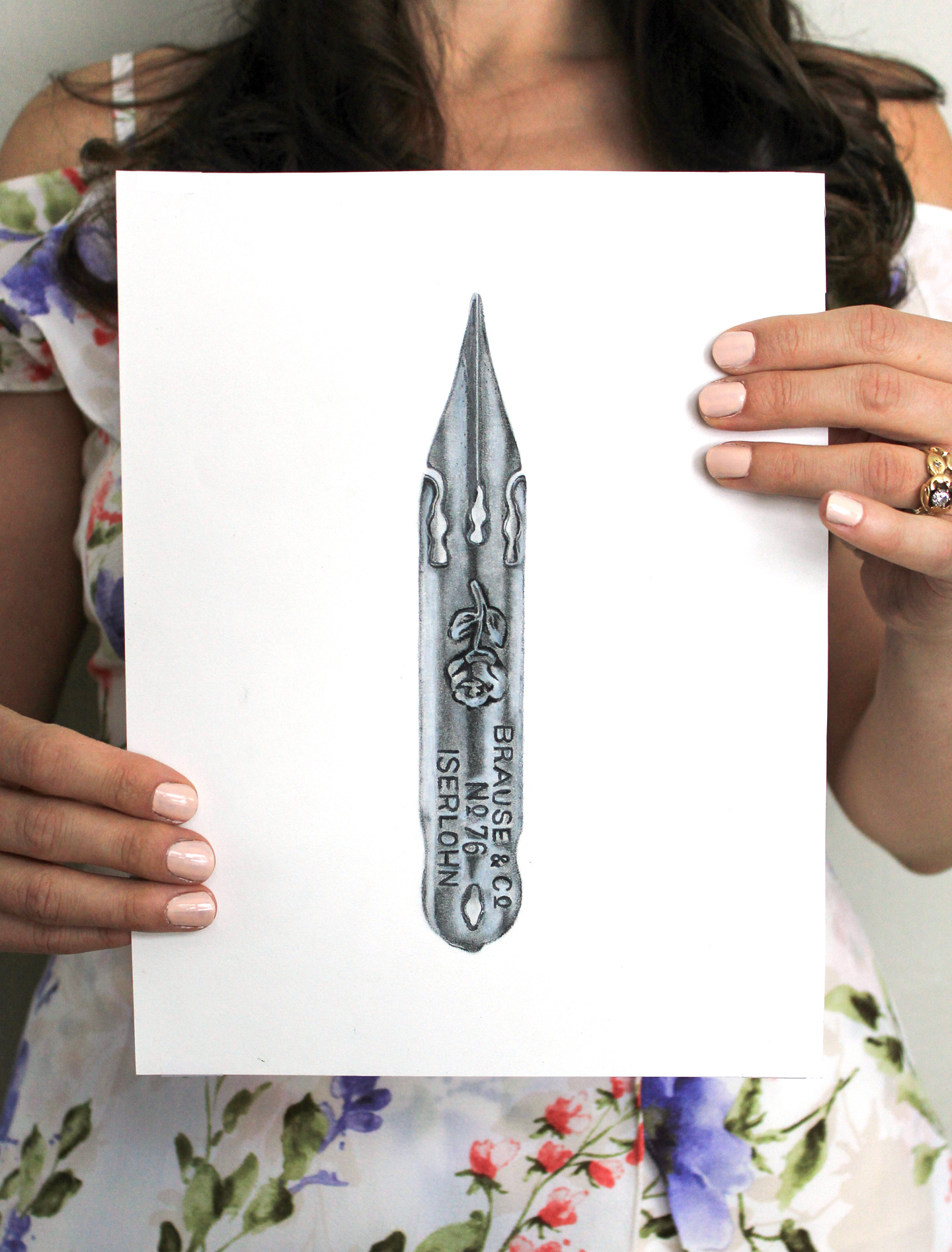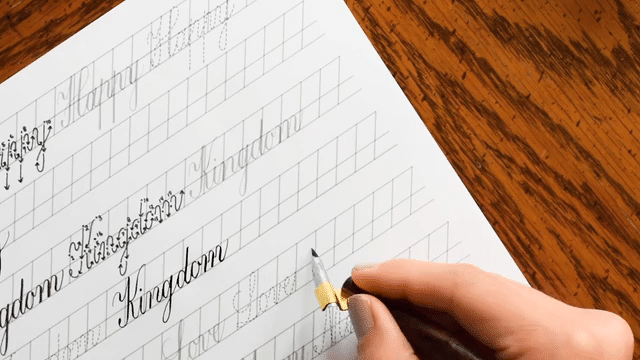
When people ask me what I do — as in, what is my profession — I generally say I am a blogger whose main goal is to help people learn calligraphy, and modern styles in particular. While there are a lot of art and DIY projects mixed in with calligraphy posts, calligraphy and hand-lettering is the lifeblood of TPK. That said, the other day I was examining the blog and trying to look at it from the perspective of someone who has happened upon the website for the first time. In that moment, I realized that even when you conduct a concentrated search {e.g. “learn calligraphy”}, there are a lot of articles, and it’s difficult/overwhelming to choose which one to begin with.

I thought today’s post could be a little tour through the TPK blog for brand-new learners. TPK veteran readers should benefit from this structured organization of past posts as well … perhaps there are a few that you missed! Either way, posts are organized in the order that a beginner should read them in order to get the best, most straight-forward information about learning calligraphy from the TPK site.

I, personally, believe that creating “cheating calligraphy” {a.k.a. “faux calligraphy”} is the best way to start learning modern calligraphy. Cheating calligraphy makes you mindful of letterforms, and it teaches you about upstrokes and downstrokes. I got my start in calligraphy by creating cheating calligraphy, and that’s why I advocate it as a great way to begin! As a bonus, you’ll get instant gratification, which is so important when you’re learning a new skill.

If you’re new to a pursuit, the temptation is to purchase a pre-made kit. The problem with purchasing a kit is this: you’ll pay a premium for the assembly, and you’ll more than likely get lower-quality supplies like plastic holders so the assembler can turn a profit. Plastic holders aren’t bad, but you may as well make your own kit and get a more comfortable cork holder with a universal insert {see the post for more details} and a good nib. I promise, the blog post walks you through making the whole kit, so it won’t be difficult; and if you have questions, you can always ask.

The question I receive the most from TPK readers is “Which Learn Calligraphy for a Latté worksheet should I start with?” The best answer I can give is “any one that appeals to you”. They’re all formulated for beginners, though intermediate users enjoy them just as much. Each worksheet {save for “Hand-Lettering for a Latté”} starts out with a faux calligraphy section intended to ease “newbies” into feeling comfortable with letterforms. Effectively, any worksheet will help you to learn.
If you were to ask me, though, which of the styles is best to begin with, I’d say the Amy. It has no slant, so it’s great for people who are very new to writing in a calligraphic or script style. It also includes an optional video course. This has proven very helpful to visual learners who like to see letters being written out!


When I hear the word “practice”, it takes me back to my adolescence, which was spent playing the same thing over and over again on a squeaky clarinet. That wasn’t necessarily fun for anyone, particularly family members who opted to stay in the house as I soldiered on. You’ll find that calligraphy practice, in contrast, is fun and entertaining for you and for others {if you send them the fruits of your labor}. You have tangible proof of your progress as you go along, and you’ll experience many “Aha!” moments as you write. “Practice” can apply to anything, too: making a decorated envelope for a friend or creating calligraphic artwork for your home. For some good practice tips, read this blog post.

I recommend that beginners begin with the Nikko G nib because it’s got a nice, medium flex that won’t give you grief. I’d describe it as “solid” and “reliable”. However, it’s not my favorite nib … the über-flexible Brause EF66 is! Once you’ve practiced a bit with the Nikko G, it’s time to place an order for some new nibs. This blog post will give you some great ideas as far as which nibs to try out next {as well as care and cleaning tips for the nibs you currently have}.

I am a big fan of oblique pen holders. For people who are right-handed, like me, they help to achieve a wonderful slant and they keep my hand out of the way! Honestly, I use an oblique pen to create calligraphy at least 95% of the time. Oblique pens used to really intimidate me, so it was a while before I attempted using one, but once I got the hang of it, I was in love. Since they are a bit odd, I do recommend beginning with a straight pen, then moving onto the oblique when you feel you are ready.
If you’re a leftie, a left-handed oblique pen is wonderful for you, as well. Some left-handed people contort themselves in all sorts of uncomfortable positions to achieve the calligraphy style they want, and left-handed oblique pens will render that contortion unnecessary. As with the right oblique pen, the left oblique pen helps to keep your hand out of the way. Whether you’re left- or right-handed, the left oblique is a great tool to have … just make sure you get the correct one for your dominant hand.
7. Get Started!

The best way to learn something is to jump in and do it, so try out your new modern calligraphy endeavor next time you find yourself in a creative mood! The last two resources I’ll mention before leaving you to it is this blog post, which may answer questions that develop as you’re learning; and my Learn Calligraphy Pinterest board, which contains links to posts you will be interested in after you reach a certain level of proficiency {e.g. how to flourish, how to write with white ink}.
I sincerely hope you found this blog post helpful; even if this beginning roadmap doesn’t apply to you, it may come in handy for someone you know who is learning modern calligraphy! If you have any questions {or additional tips}, please don’t hesitate to contribute to the conversation in the comments below! Someone pointed out a couple of days ago that this blog has the best readers, and I have to proudly agree … so thank you for being the cream of the crop!
Warmly,














